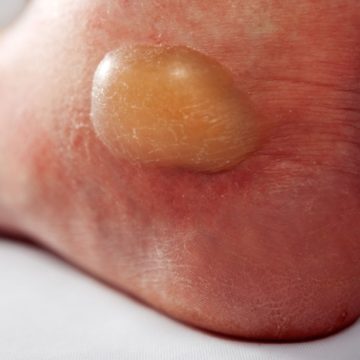
- People with diabetes can also experience skin diseases as complications, like diabetic blisters.
- Diabetic blisters are rare, but when infected, they can cause serious problems.
- Wearing ill-fitting shoes can also cause diabetic blisters to form.
People with diabetes often experience complications as a result of the disease. According to the 2014 analysis published in the American Journal of Clinical Dermatology, almost 80% of people with diabetes develop skin diseases. These skin conditions will include diabetic blisters.
What are the causes of diabetic blisters?

Bullosis diabeticorum or more commonly called diabetic blisters are fluid-filled pockets that form in the skin’s upper layers. Michael Cunha, a certified podiatric surgeon shares that these blisters look like burn blisters, and the fluid inside are clear and painless, but when it becomes infected, it can bleed and produce pus. The American Diabetes Association adds that they can develop in various sizes and appear in the fingers, hands, forearms, toes, feet, and legs.
Cunha explains that the cause why diabetic blisters form is unclear because it can develop even without injuries. But some factors can increase the chances of developing diabetic blisters, such as:
1. Uncontrolled Blood Sugar Levels
According to Cunha, people with diabetes often lose sensation in their lower extremities due to poor blood circulation or neuropathy, another complication of diabetes. When they develop blisters, they may not notice or feel it not until it has worsened.
2. High Blood Sugar Levels
Fungal infection can also develop in people with high blood sugar levels. The itchy rashes can worsen the blisters, which can lead to other serious complications.
3. Wearing Ill-fitting Shoes
Wearing shoes that do not fit well for an extended period can also result in blisters’ formation. The constant friction between the shoe and the feet can lead to the formation of blisters.
How to treat diabetic blisters?

Cunha shares that the initial treatment for diabetic blisters is letting them heal on their own, which usually takes about a few weeks. Poking, popping, and peeling the blisters are discouraged to avoid infection and hasten the recovery. Instead, Cunha advises that the blisters should be washed with clean water and soap. He adds that changing socks several times a day and keeping blood sugar levels under control are also important ways to treat diabetic blisters.
Rebecca Pruthi, a podiatric surgeon and owner of Foot Care Manhattan in New York, also recommends that if you have diabetic blisters, it is essential to wear shoes that won’t directly rub on the blisters. If the blisters pop, covering it with a bandage will help prevent further rubbing and infection.
What are the ways to prevent diabetic blisters?

People with diabetes need to put extra attention on their feet to avoid blisters or neuropathy.
Here are some ways to help prevent the development of diabetic blisters:
- Inspect the feet daily for blisters or sores.
- Avoid wearing ill-fitting shoes.
- Buy shoes at the end of the day when the feet are more swollen to get the exact fitting.
- Always wear socks when using shoes to avoid the formation of blisters.
- Keep blood sugar levels under control.
Source: The Healthy
